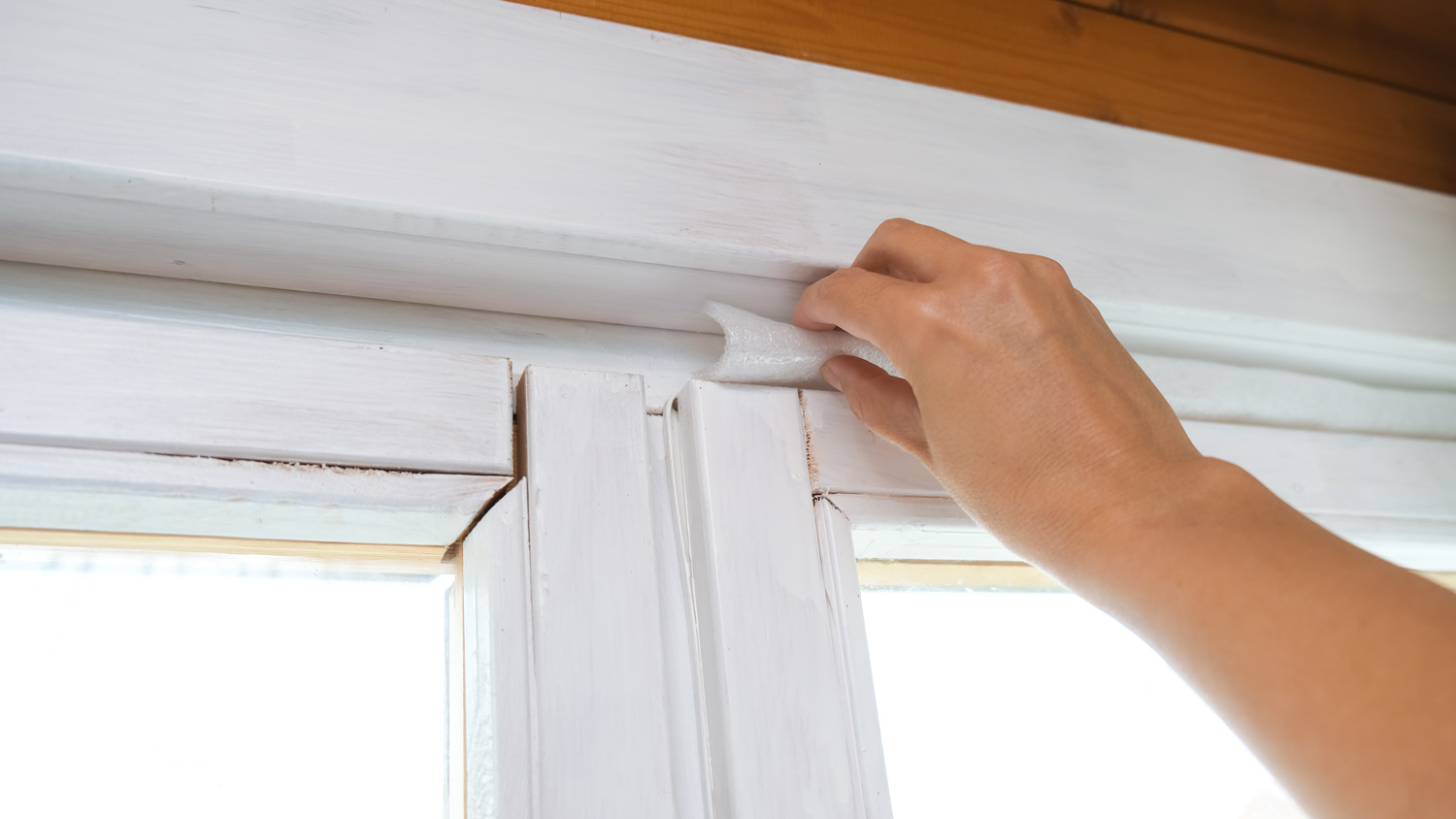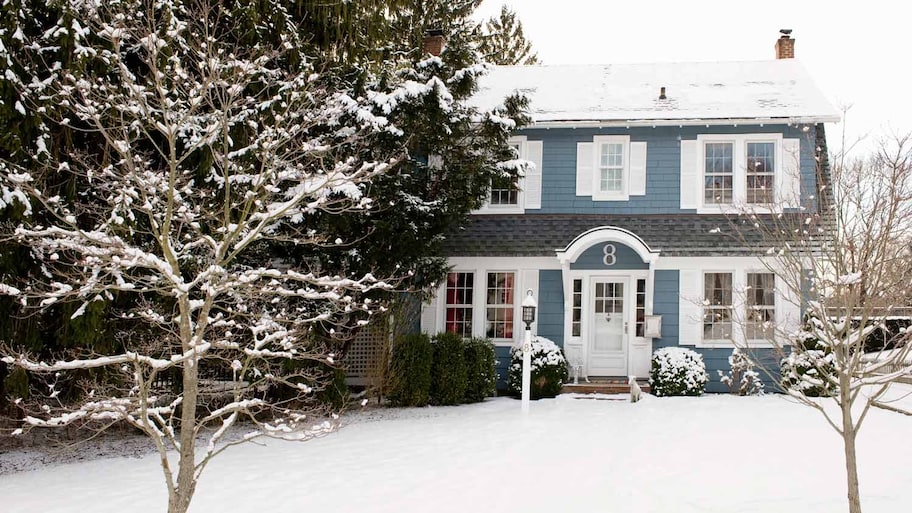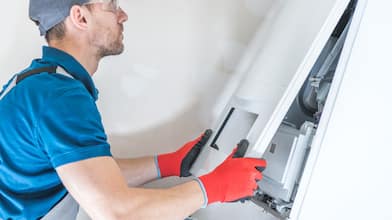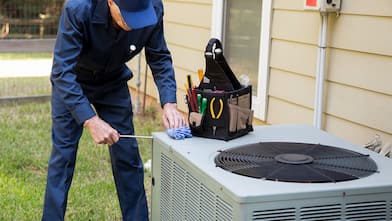It's time to tighten up your house for better cold weather comfort
When cold weather sets in, some homes tend to feel it more than others. If your home’s construction isn’t as thermally efficient as you’d like, it’s time to weatherize your home for winter. Focus on the key areas that lose heat first, like your floor joints and windows to name a few. It’s a finicky process, sure, but one that requires minimal skill and materials—perfect for a DIY weekend this fall. Here are a few tips for how to weatherize your home for winter, so you can protect your home and keep your space warm during the coldest days of the year.
1. Insulate Water Pipes
Water pipes that freeze could burst and cause flooding or water damage. You can winterize your pipes by insulating them. However, the cost to insulate pipes will vary depending on whether you complete the work yourself or enlist the help of a professional. To winterize, wrap the insulation around your water pipes, especially for the pipes in unheated spaces such as attics, basements, and garages.
You can hire a local handyperson for pipe insulation for $1–$4 per linear foot.
For DIY pipe insulation, you can find the materials for $7 per six feet at your local hardware store.
2. Add Weatherstripping

Iuliia Mikhalitskaia/iStock/Getty Images Plus
Weather stripping is one of the most common ways to weatherize a home. This process helps stop cold drafts around your doors and windows to keep your home warm and lower your energy bills by as much as 30%.
Seal gaps from 1/16 of an inch to 1/4 of an inch with caulk to stop drafts.
For gaps larger than 1/4 of an inch, use a spray foam sealant or expandable foam tape.
3. Add Door Sweeps
You can put door sweeps on the base of exterior doors to help keep out cold air. A 1/8-inch gap in a door can let in as much air as a window that is open halfway, so it’s important to seal these gaps. Note that if you do have gaps, some experts advise reinstalling the door to prevent drafts.
4. Apply Window Film
Window insulation can improve the efficiency of your windows by up to 90%. Once you’ve added enough weather stripping to seal any gaps, you can also consider adding window film for optimum efficiency.
Find window insulation kits, or window film, at your local hardware store. Packs with enough film for 5 to 10 windows cost around $10 to $20. The steps to install window film will vary by manufacturer, but generally, you will apply the film to windows using a hairdryer.
5. Change Your Furnace Filter
Check your air filters on your heating unit before the weather turns cold. A clogged filter restricts airflow, forcing the unit to work harder. The frequency at which you should change your air filter will depend on the type of filter you buy, so be sure to inspect them as needed. As for any window air conditioners, it’s best to remove window AC units and store them before winter.
6. Install a Programmable Thermostat
With a programmable or smart thermostat, you can save money on energy bills year-round. You can save as much as 10% a year on heating and cooling by simply turning your thermostat back 7–10 degrees Fahrenheit for 8 hours a day. Here are a few ways to adjust your thermostat throughout the day:
Set the daytime temperature to about 68 degrees Fahrenheit when you are home and lower during the night.
Set the thermostat to a lower, constant temperature if you’re away for two or more days. Don’t turn it off or set it too low, though, to prevent burst pipes.
However, if you have an energy-efficient heat-pump system, you may not need to touch the thermostat at all. This is another energy- and money-saving option if you don’t want to mess with a programmable thermostat.
7. Cover Water Heater Tanks
Water heater tanks that are located in unheated spaces, like a basement or garage, may require more energy to heat the water once the colder seasons arrive. A water heater tank cover can help ensure your tank doesn’t work as hard to warm your water and decrease heat loss by about 25 percent. A water heater tank cover usually costs around $20, depending on the material, such as fiberglass or foil, the R-value, and whether or not it is resistant to mold and water.
Pair water heater tank blankets with pipe insulation to protect your home from expensive utility bills and even burst pipes or water damage.
8. Clean the Gutters

Roy Morsch/The Image Bank via Getty Images
Autumn’s falling leaves may be pretty, but they can clog gutters and prevent snow and ice from melting and draining properly. Recurring water buildup can lead to water spots or water damage, so it’s best to remove the leaves and debris before the snowy season starts.
9. Set Ceiling Fans to Rotate Clockwise
Ceiling fans can be adjusted to rotate clockwise and better circulate heated air in the winter. Simply flip the lever or switch located near the motor housing in the opposite direction to change directions. This will set the fan to pull cool air upward and push warm air downward. To save even more energy, set the fan on its lowest speed and only turn on ceiling fans in rooms that are occupied.
10. Prepare Enough Firewood

Guido Mieth/DigitalVision via Getty Images
If you have a fireplace, you’ll want to prep firewood roughly six months in advance to help heat your house all winter. This will allow the cut wood to dry out before it’s used as firewood. Store the firewood on a log rack and in a cool, dry place to protect it from pests and prevent rotting.





